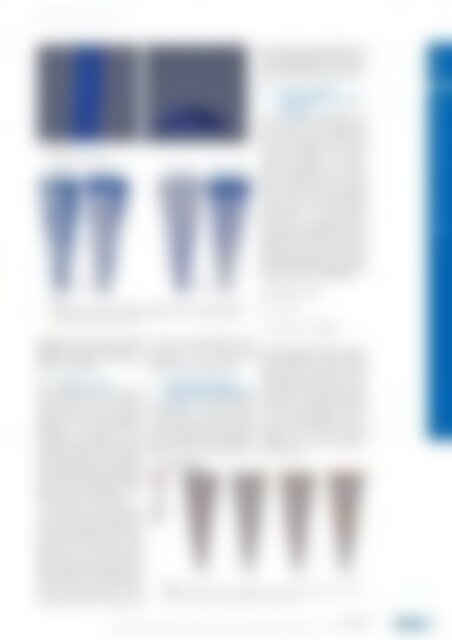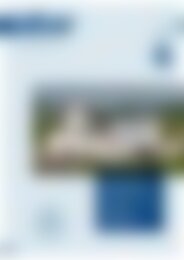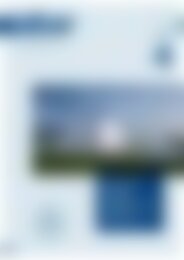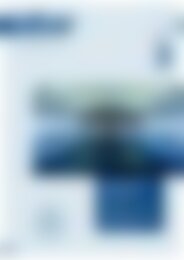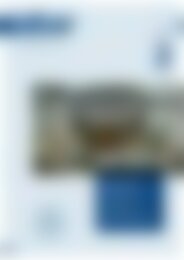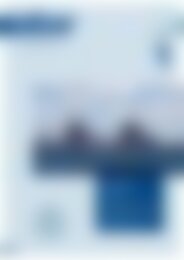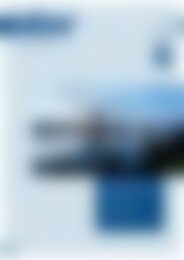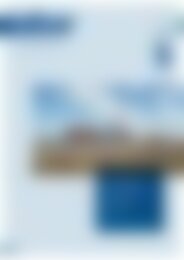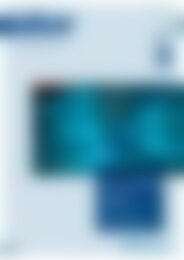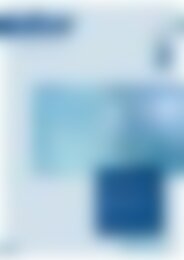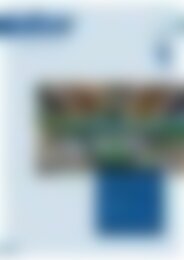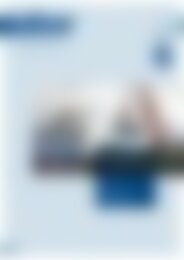atw 2017-07
Create successful ePaper yourself
Turn your PDF publications into a flip-book with our unique Google optimized e-Paper software.
<strong>atw</strong> Vol. 62 (<strong>2017</strong>) | Issue 7 ı July<br />
| | Fig. 4.<br />
Mesh resolution and thin rivulet.<br />
standard deviation and amplitude and<br />
then interpolated onto the mesh. This<br />
initial field (Figure 6) is then superposed<br />
with the contact angle model.<br />
4.1 Theory of filtered<br />
randomized initial contact<br />
angle field<br />
In the previous simulations, the<br />
decisive influence of the contact angle<br />
has become clear. Experimental<br />
surfaces are imperfect and therefore<br />
this step is necessary for a more<br />
realistic description of the experiments.<br />
The procedure is as follows:<br />
before the simulation starts, a virtual<br />
field is generated in the x-y-plane<br />
which is later rotated and mapped<br />
onto the mesh of the computational<br />
boundary. Every cell in that virtual<br />
field contains a random number<br />
generated by a preassigned distribution<br />
(uniform distribution or normal<br />
distribution on a given interval symmetrical<br />
around zero). This random<br />
field is filtered with a box or Gaussian<br />
filter with a predefined filter width or<br />
standard deviation (see Figure. 6).<br />
479<br />
AMNT <strong>2017</strong> ı COMPETENCE PRIZE<br />
| | Fig. 5.<br />
Comparison of simulations with empirical contact angle model and the laboratory experiments by Becker<br />
Technologies [2] (in false color representation) with mass flow rate ṁ = 11 _ g s<br />
, two different inclinations<br />
(left 2°, right 20°) and without aerosol loading.<br />
Gaussian filter kernel:<br />
–3σ ≤ i,j ≤ 3σ<br />
in height and four to five cells in width<br />
(Figure 4). Overall the unstructured<br />
mesh has 3.8 million cells (99 % hexahedrons,<br />
1 % prisms).<br />
3.3 Simulation results<br />
The simulations with the empirical<br />
contact angle model (with a constant<br />
contact angle for dry and wetted<br />
surfaces) show a very good qualitative<br />
agreement with the laboratory<br />
experiments (see Figure 5). The<br />
rivulets do not change their path and<br />
a pseudo-stationary state is reached.<br />
The deviations in the area of the inlet<br />
at the top of the plate can be explained<br />
by the fact that the scattering nozzles<br />
used in the experiment are not exactly<br />
modeled in the simulations, but a<br />
slotted nozzle was used instead.<br />
The influence of the inclination<br />
on the water is clearly visible. Very<br />
similar to the laboratory experiments,<br />
for a bigger inclination (20˚) several<br />
rivulets (up to eleven) with a small<br />
width (one to two centimeters) and<br />
relatively high run down velocities<br />
form in the simulations. On the almost<br />
horizontal plate (2˚ inclination), the<br />
water runs down in only few (about<br />
six), wider (about three to four<br />
centimeters) rivulets. The velocity of<br />
the water is also significantly reduced<br />
in this case. These results agree<br />
qualitatively very well with the<br />
observations of the experiments.<br />
4 Filtered randomized<br />
initial contact angle field<br />
An initialization of filtered random<br />
contact angles on walls, based on [6],<br />
is introduced to mimic realistic<br />
surfaces with impurities and contact<br />
angle inhomogeneities. Randomized<br />
contact angles on a virtual field are<br />
filtered by a Gaussian filter with given<br />
After initializing the filtered random<br />
field the simulation starts and during<br />
the simulation the initial contact<br />
angle field is superposed with the<br />
contact angle model in use (e.g. with<br />
the empirical contact angle model).<br />
The goal is to investigate to which<br />
extent the water behavior is disturbed<br />
by such inhomogeneities and to<br />
conduct several variations of one<br />
experiment and extract statistical<br />
quantities for several characteristics<br />
of the flow field.<br />
σ = 0, σ = 2, σ = 8, σ = 16,<br />
| | Fig. 6.<br />
Filtered randomized initial contact angle field, filtered with increasing standard deviation from left (σ = 0)<br />
to right (σ = 16). Normal distribution and Gaussian filter were applied.<br />
AMNT <strong>2017</strong><br />
Modeling and Simulation of Water Flow on Containment Walls with Inhomo geneous Contact Angle Distribution ı Katharina Amend and Markus Klein


